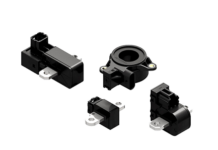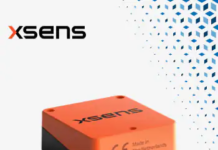Market Summary:
According to Research Intelo, the Global Acoustic Vector Sensor market size was valued at $512 million in 2024 and is projected to reach $1.21 billion by 2033, expanding at a robust CAGR of 9.8% during the forecast period of 2025–2033. The primary driver fueling this remarkable growth trajectory is the increasing integration of acoustic vector sensors in defense and security applications, particularly for advanced surveillance, underwater navigation, and anti-submarine warfare. The rising demand for precise directional sound detection, coupled with advancements in sensor technologies such as MEMS and fiber optics, is significantly enhancing the capabilities of these sensors, making them indispensable across a range of sectors including military, industrial, and environmental monitoring.
What are the key drivers of the Acoustic Vector Sensor Market?
1. Rising Demand in Defense and Security
According to Research Intelo, The defense sector remains one of the largest consumers of acoustic vector sensors. These sensors are instrumental in anti-submarine warfare (ASW), sonar arrays, and maritime surveillance systems. Their ability to detect the direction of sound sources with high precision enhances naval defense capabilities, leading to growing adoption by military organizations across the globe.
2. Expanding Applications in Marine Research
In marine science, acoustic vector sensors are increasingly used for oceanographic monitoring, seabed mapping, and underwater communication. The sensors provide high-resolution data crucial for understanding marine biodiversity, underwater ecosystems, and ocean currents. As governments prioritize marine conservation and sustainable fishing, the adoption of AVS technologies continues to surge.
3. Technological Advancements in Sensor Design
Recent innovations in MEMS technology and digital signal processing have significantly improved sensor sensitivity and reduced power consumption. The introduction of miniaturized AVS devices has opened new opportunities in unmanned underwater vehicles (UUVs), autonomous surface vessels, and smart industrial environments.
Challenges in the Market
Despite the promising outlook, the Acoustic Vector Sensor Market faces certain challenges. High manufacturing costs, complex calibration requirements, and environmental noise interference can limit large-scale deployment. Additionally, the lack of standardized testing protocols for performance evaluation across different applications remains a barrier to global commercialization.
Competitive Landscape
The Acoustic Vector Sensor Market is moderately consolidated, with key players focusing on product innovation, R&D collaborations, and defense partnerships. Companies are developing advanced multi-sensor arrays and software-based signal enhancement tools to improve accuracy and performance. Prominent participants in the global market include:
- Btech Acoustics Ltd.
- Geospectrum Technologies Inc.
- Microflown Technologies
- Raytheon Technologies Corporation
- Thales Group
Future Outlook
The future of the Acoustic Vector Sensor Market looks promising, with continued advancements in AI-based signal processing, 3D acoustic imaging, and underwater robotics. As demand for high-precision acoustic sensing grows across defense, industrial, and environmental domains, the market is projected to witness substantial expansion over the next decade. The integration of AVS with autonomous systems and real-time data analytics will redefine how acoustic information is collected and utilized.
Source: https://researchintelo.com/report/acoustic-vector-sensor-market


















